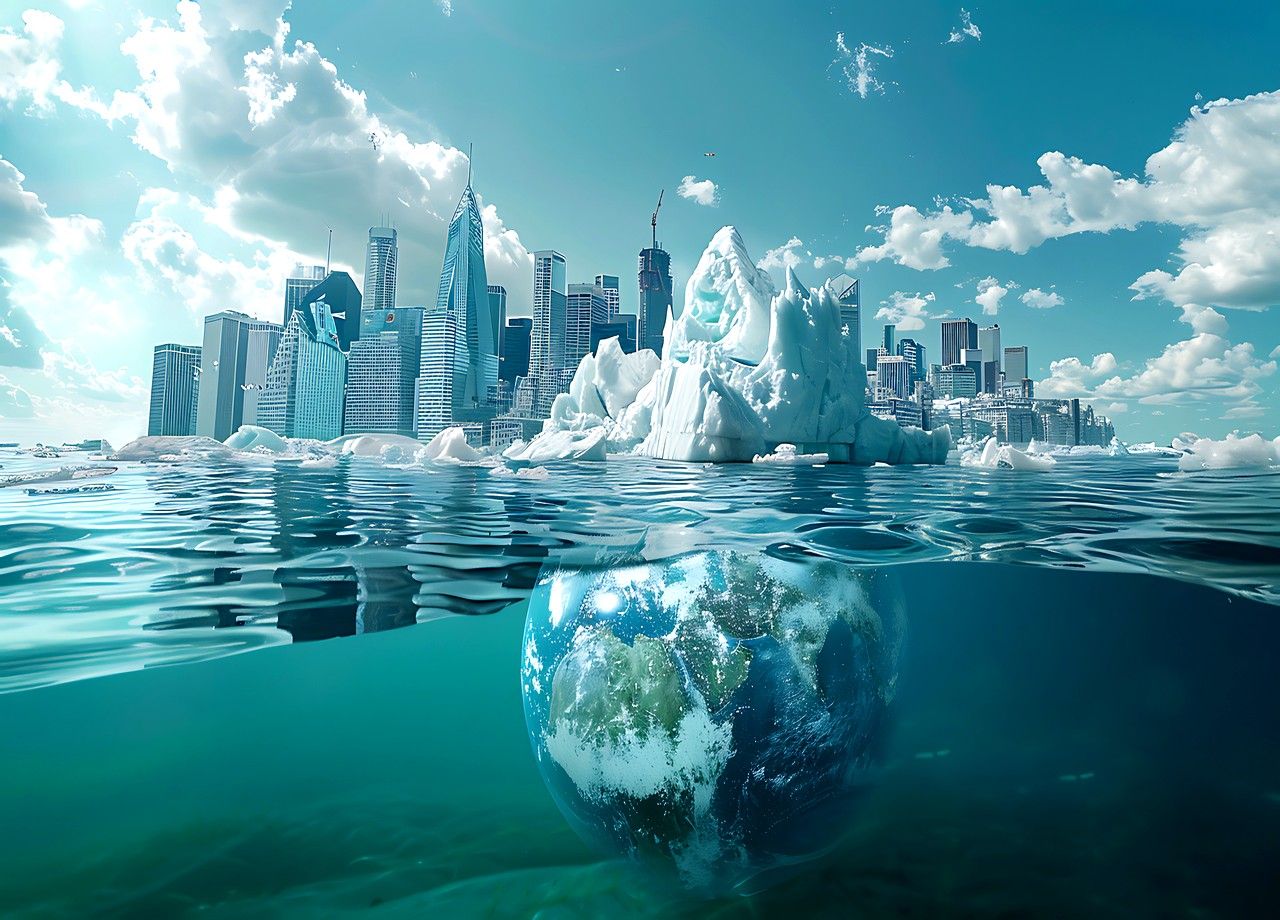
According to a new study of the Greenland ice sheet, the climate model E3SM v.2 may do just that. overestimation of whitenessa basic property of ice. Which affects the speed of its dissolution. and thus rising ocean levels
The importance of whiteness
The proportion of solar radiation reflected from a surface depends on its physical properties, especially its color. The whiter the body, the The whiter it is, the more likely it is to reflect the light it receives.Conversely, the more it leans towards black, the more likely it is to absorb this light energy and thus warm up.
Scientists need to make predictions about the future climate of our planet. Numerical representations of the Earth systemIn other words, models that are able to Accurately determines the albedo of different surfaces on our planet. To predict its tendency to heat or reflect solar radiation.
One common simplification used in most future climate models is to assume that Mountain glaciers and ice caps are associated with high albedo value.and above all constantIn fact, these surfaces are white in color and therefore must reflect a large portion of the light energy they receive.
Details of the amazing texture of the glacier.
Nikon Z6ii, Sigma 100-400mm, Haida CPL
1/320 sec, f/11, ISO 500, single shot, no tripod.Greenland Photo Tour August 11-17.
Follow the link in bio! pic.twitter.com/ytQCgxicfz
– Stefano Palma (@StefanoBalma) February 16, 2024
However, the simplifications used in the modeling do not necessarily represent reality. In reality, at the edge of these large areas, the ice is often gray because it is bare (without snow) but also filled with darker holes, lakes in general, or even stained with algae and dust. Therefore, these sectors are quite wide depending on the area. Its albedo is much lower than the surrounding snow-covered ice, and therefore it warms up more quickly.
Modeling error
Based on this principle, researchers from the laboratory of Professor Charlie Zender at the University of California, Berkeley, have been interested in a model called E3SM (Energy Exascale Earth System Model). According to their results, the second version (v.2) of this model I overestimated the whiteness of the snow by about 5%.
By recalculating this parameter using satellite data collected over the Greenland ice sheet, the study authors found that the new version of the E3SM model had He underestimated the melting of ice in this region by about 6 billion tons per year.compared to the older version of the same model.
This lower estimate corresponds to an additional loss of ice of about 145 billion tonnes between 2000 and 2021, equivalent to a 0.4 mm increase in sea level rise.
This number may seem small at first glance compared to the 20 cm increase observed over the past century, but it is important to consider that this is only the difference related to Greenland's albedo, So to underestimate this is to underestimate it is to underestimate it on a planetary scale!
The team therefore plans to study other frozen surfaces on the planet, such as glaciers in the Andes and Alaska, in order to make a more global assessment of the overestimation of climate models such as E3SM v.2. However, the study also highlights the fact that Small-scale physical properties can have important consequences for global climate.Finally, the researchers' work will eventually allow models to better understand the true albedo of ice caps and glaciers, in order to obtain More accurate estimates of future sea level rise around the world.





